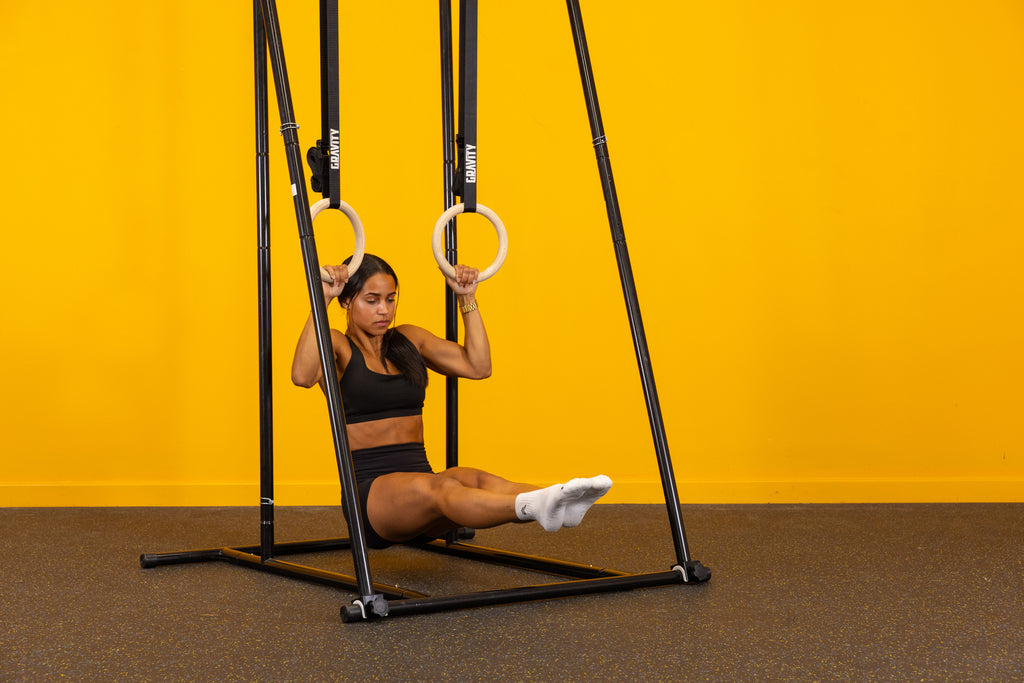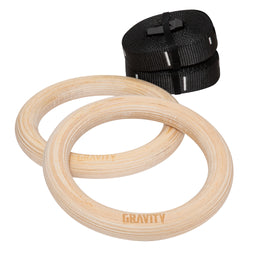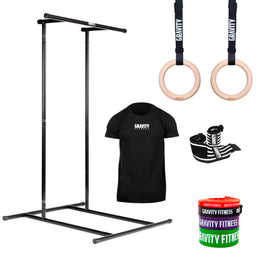
Gymnastic Rings Buyers Guide

1. What Are Gymnastic Rings and Who Are They For?
Gymnastic rings are a suspension training tool that challenges your strength, stability, and control in every rep. By suspending your body on freely moving rings, you activate more muscles — especially in your core, shoulders, and grip.
Who are they for?
Anyone training bodyweight strength — from beginners building joint stability to advanced athletes working on muscle-ups, levers, and ring dips. Whether you train calisthenics, CrossFit, gymnastics, or just want to build bulletproof strength, rings belong in your setup.
2. Are Gym Rings Effective? (Why Train with Them)
Absolutely. Gym rings turn simple exercises into high-skill, high-strength movements. They’re one of the most challenging — and rewarding — tools in functional training.
Benefits include:
• Increased core and stabiliser activation
• Greater range of motion and joint mobility
• Scalable progressions — from assisted work to elite skills
• Grip, wrist, and forearm development
• Portable — hang them anywhere and train full-body
They demand focus and control. There’s no cheating on the rings.

3. Types of Gymnastic Rings (And Which One Is Right for You)
By Material:
• Wooden Rings: Superior grip, absorbs sweat, and has a natural feel. Doesn’t get slippery — ideal for high-rep work or outdoor sessions.
• Plastic Rings: More durable in harsh conditions (e.g. rain), but can feel slick, especially with sweaty hands. Often included with cheaper setups or beginner kits.
Verdict: Gravity’s wooden rings strike the best balance — professional feel, excellent grip, and long-lasting performance in real training environments.
By Thickness:
• 28mm Rings: Standard competition size for gymnastics. Smaller grip allows for better control in high-skill movements like muscle-ups, levers, and planches. Ideal for athletes with smaller hands or those chasing technical precision.
• 32mm Rings: Thicker grip suited for general strength training, Calisthenics, and those with larger hands. Increases grip demand, making every rep more taxing on the forearms and wrists.
Which to choose?
Go 28mm if you’re focused on skill work or want to follow gymnastics-style programming.
Go 32mm if grip strength is a priority or you want a more general-purpose strength tool.
4. Which Type of Rings Is Best for You?
• Calisthenics & Skill Work: 28mm wooden rings. Better for control and technical accuracy.
• General Strength Training: 32mm wooden rings. Increased grip challenge and durability.
• Outdoor Use or Harsh Conditions: Plastic rings can work, but performance is compromised compared to wood.
Most serious athletes prefer wood — for comfort, grip, and feel. That’s why Gravity offers premium wooden rings with reinforced straps and secure locking buckles.

5. What Are the Downsides of Gym Rings?
(And Who Should Avoid Them)
Rings are demanding. That’s what makes them great — but also not always beginner-friendly.
Potential drawbacks:
• High learning curve — takes time to stabilise movements
• Risk of strain if rushing into advanced skills
• Not ideal for people with existing shoulder injuries
• Requires setup space — you need a stable anchor point
Start with basics: ring rows, push-ups, and dips before jumping into more advanced movements.
6. How Often Should You Use Gymnastic Rings?
• Beginners: 2–3x per week with basic movements and support
• Intermediate/Advanced: 3–5x per week mixing strength, skill, and endurance work
• Ring training can be done daily at low volume for skill development — just manage fatigue and avoid overuse

7. What Exercises Work Best with Rings?
Rings transform basic movements into full-body challenges:
• Upper Body Strength: Ring dips, ring push-ups, ring rows, pull-ups, archer holds
• Skill Progressions: Muscle-ups, front lever, back lever, skin the cat, support holds
• Core: Rollouts, L-sits, toes to rings, hanging tucks
• Conditioning: EMOMs, ring circuits, tempo reps for endurance and control
Add a weighted vest for overload or combine with parallettes for full push-pull balance.
8. What Equipment Works Well with Gym Rings?
Pair your rings with:
• Weighted Vests: Add resistance for strength-focused sets
• Parallettes: Alternate vertical and horizontal push/pull patterns
• Pull-Up Bars: Use rings on a mounted bar for versatile setups
• Resistance Bands: Assist tough movements or work on mobility
• Steel Mace or Indian Clubs: Improve shoulder mobility between ring sessions














